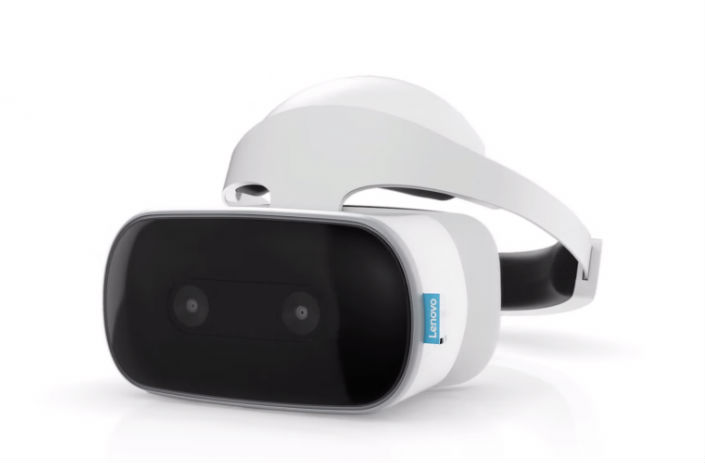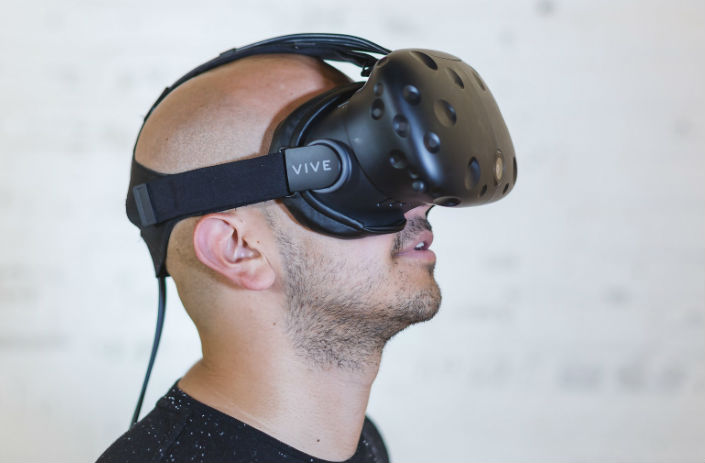Where many decided that 2017 would be the year of AR and VR, there certainly wasn’t enough material or hype to back it up. Will 2018 change that?
The AR and VR markets in 2017
Last year, predictions said Virtual and Augmented Reality (VR/AR) would come out strong throughout the year. It is true we did see advancements in the technology from different companies. Apple seems to be working on a pair of AR smart glasses, and in September 2017 it released the ARKit, which turned out a success but has slowly fell out of the spotlight. Nonetheless, Apple proved AR on smartphones can work properly, and maybe reliable AR smart glasses aren’t that far away.
On the other hand, Google replaced its Tango AR technology with the ARKit’s counterpart: ARCore. Unfortunately, news about this one disappeared even faster than Apple’s product.
In April 2017, we wrote about Avegant’s Light Field AR, the company who wants to compete with Microsoft HoloLens and Magic Leap. Speaking of which, Magic Leap’s announcement of a 2018-release for its first AR goggles is a welcoming news, seeing that the industry has been waiting for those since 2010. The question is: will it live up to the hype, and help to shape up the industry?
What about VR? While Sony managed to exceed sale expectations with the PSVR—selling 2 million since launch last fall—and HTC Vive, as well as Oculus Rift, dropped prices from $799 to $599 and $798 to $399, respectively, the VR community is still a small one. Unfortunately, VR sells more as an expensive consumer product—for video games, movies, and live-experiences—than it does for commercial or industrial uses.
CES 2018 Overview
But what did CES 2018 bring to these markets?
 HTC’s upgraded Vive
HTC’s upgraded Vive
Although the most expensive, HTC Vive is one of the most reliable VR headsets you’ll find in the market right now. HTC is upping its game with the newest version of the headset announced at CES 2018: the HTC Vive Pro.
It features a 2880×1600 display (previously 2160×1200), and increases pixel density by 74 percent, reaching 615ppi. The headset comes with integrated headphones and dual mics, and will now use Valve’s updated SteamVR 2.0 tracking system, which allows for more accurate tracking. The company also showcased a wireless adaptor that will let users stream content wirelessly using Intel’s WiGig technology.
 Pimax 8K VR Headset
Pimax 8K VR Headset
Announced last year at CES 2017, Pimax brought the fifth version of its 8K VR headset to CES 2018. While the headset innovates with the 3840 x 2160 dual displays, and a 200-degree field of view, one of the complaints is the size and weight of the product.
Pimax’s 8K VR headset cost $449 during its kickstarter campaign, and the company plans to ship it during Q2 2018. However, taking into consideration you will need a high-end graphics cards to achieve an 8K resolution, it will cost you a bit more than that—unless you already own such a graphics card, of course.
 The Lenovo Mirage Solo
The Lenovo Mirage Solo
Lenovo Mirage Solo is the first headset to use Google WorldSense, an inside-out positional tracking technology. It costs less than $400 and equips a Qualcomm 835 chipset, 4GB of RAM, 64 gigs of onboard memory, dual mics, a headphone jack, and a 2560 x 1440 LCD screen. According to Lenovo, it runs for 7 hours on batteries.
 Oculus Go and Mi VR Standalone
Oculus Go and Mi VR Standalone
The China-based company, Xiaomi, partnered with Facebook for the release of two new VR products. Xiaomi will likely manufacture Facebook’s Oculus Go, and also release its own VR headset specifically for the Chinese market: the Mi VR.
Both headsets use a Qualcomm Snapdragon 821 system-on-a-chip, a WQHD LCD screen, and will run all Gear VR titles. They also look and work very similarly, although the Mi VR uses the Mi VR SDK while the Oculus Go uses the Oculus Platform SDK. The Oculus Go will cost $199, and assuming the Mi VR is basically the same product, the price shouldn’t vary too much.
 A brain-monitoring VR
A brain-monitoring VR
Startup Looxid Labs is creating a system for human behavior research. The LooxidVR headset packs two eye-tracking cameras and six EEG sensors, as well as HTC’s Vive X accelerator technology. By combining these technologies with VR experiences, Looxid Labs can measure a user’s eye and brain activities, obtaining valuable information about the user’s emotions. The company is looking to develop LooxidVR as a research tool, which could be very beneficial especially for the various use cases in medicine.
Vuzix Blade
Last year, at CES 2017, Vuzix, a leading developer of Smart Glasses and Video Eyewear, showcased the Vuzix Blade 3000 AR smart glasses. Now called Vuzix Blade only, the company allowed the public to test them at the CES 2018 showfloor.
Although still a bulky product, the Vuzix Blade is closer to a pair of normal looking sunglasses than any other product available. It has a large, clear, and full color display, it’s prescription ready, weights less than three ounces, and has a two to twelve hours battery life. The smart glasses connect to the internet via Wi-Fi, or to an iPhone or Android over Bluetooth to mirror notifications, and display photos, and videos. More importantly, Vuzix’s partnership with Amazon makes Vuzix Blade the first AR smart glasses to use Amazon’s voice-controlled system Alexa.
Vuzix said the AR smartglasses will cost $1,000 for the consumer version, with prices coming down to less than $500 with future generations.
AR Goggles from Realmax
Augmented Reality startup Realmax, based in Hong-Kong, is working on a prototype which fixes one of Microsoft HoloLens biggest issue: field-of-view. While Microsoft’s AR headset features a 35º FOV only, Realmax’s prototype reaches the 100º. Additionally, the startup is using Leap Motion’s technology, which works as an attachable module used to detect hand movements and allow users to interact the virtual objects.
Realmax will release a developer version by the third quarter of 2018 for around $1500.
Is 2018 “the year” for VR and AR?
From a consumer standpoint: Even though price drops from leading companies in the VR industry sound great, I know why I haven’t bought my own VR headset yet: The technology is still too expensive for the amount of available quality consumer-oriented content. Do we really need, for example, an HTC Vive Pro at this moment? Shouldn’t we first invest in portability, instead of requesting more processing power, which results in spending even more money?
Next, the slow pace of AR raises the question as to when we will see it incorporated into our day-to-day life—and I’m not talking about AR on the smartphone, but smart glasses. Fortunately, commercial and industrial sectors already use AR for different operations, but unfortunately, it is still very limited and clunky. Maybe Magic Leap changes that in the near future, Apple manages to come out strong and unveil what AR really is, or Microsoft doubles the HoloLens FOV and it becomes the “perfect” product.
Predictions in 2015 and 2016 both claimed that the year to come was “the one” for AR and VR. Again, there’s no doubt 2017 helped the industry grow, even if just a little. Can we really say 2018 is where it all changes? While the products at CES show us a glimpse of what seems to be a better future, I can only wonder if we’re on the right track.






